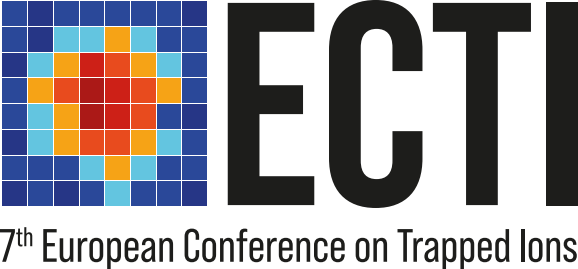Speakers
Description
We report our plans and progress towards implementing a cavity quantum electrodynamics system with Barium ions. With Barium ions’ strong S-P dipole transition at 493 nm, we can expect much stronger ion-cavity coupling than achievable with infrared transitions in Barium as well as in other atomic species. This can be exploited for high-fidelity light-atom entanglement generation and state readout in the dispersive regime. However, so far, cavity QED experiments with ions utilizing S-P transitions have suffered from high optical losses and in-vacuo degradation of mirror coating leading to poor performance of the optical cavities [1]. However, this has not been established for the wavelength that we are concerned with, 493 nm. This wavelength is of particular interest since 1) it is the longest wavelength for a S-P transition among all major ionic species, and 2) the in-vacuo degradation of mirrors has not been observed at wavelengths beyond 550 nm [2]. As a first step towards cavity QED with Barium ions, we are testing coated highly reflective mirrors in vacuum.
To test possible degradation, we have built a Fabry-Perot cavity using mirrors that are highly reflective at 493 nm and placed it in a vacuum chamber. The chamber is maintained at a pressure of $10^{-8}$mBar. We are testing degradation by two different mechanisms that are known from previous studies. The first mechanism is the diffusion of oxygen from the mirror surface in vacuum over time [3]. We have observed no such degradation over the past year. The second mechanism is laser induced damage of the mirror surface under continuous exposure to laser light in vacuum [4]. To study this we lock the cavity in vacuum to the laser resonance and record the cavity finesse after prolonged exposure. We measure the finesse at regular intervals to check for degradation. As we do not expect nonlinear optical effects to play a role, the total integrated optical power is the quantity of interest. The experiment is in progress, and we will report up-to-date results at the conference. We will also report the design for our envisioned ion trap-cavity system with Barium ions.
This work is supported by JST Moonshot R&D Grant No. JPMJMS2063.
References:
[1] T. G. Ballance et al., Phys. Rev. A 95, 033812 (2017).
[2] M. Takeuchi et al., Phys. Rev. A 81, 062308 (2010).
[3] D. Gangloff et al., Opt. Express 23, 18014-18028 (2015).
[4] J. Schmitz et al., Rev. Sci. Instrum. 90, 063102 (2019).

